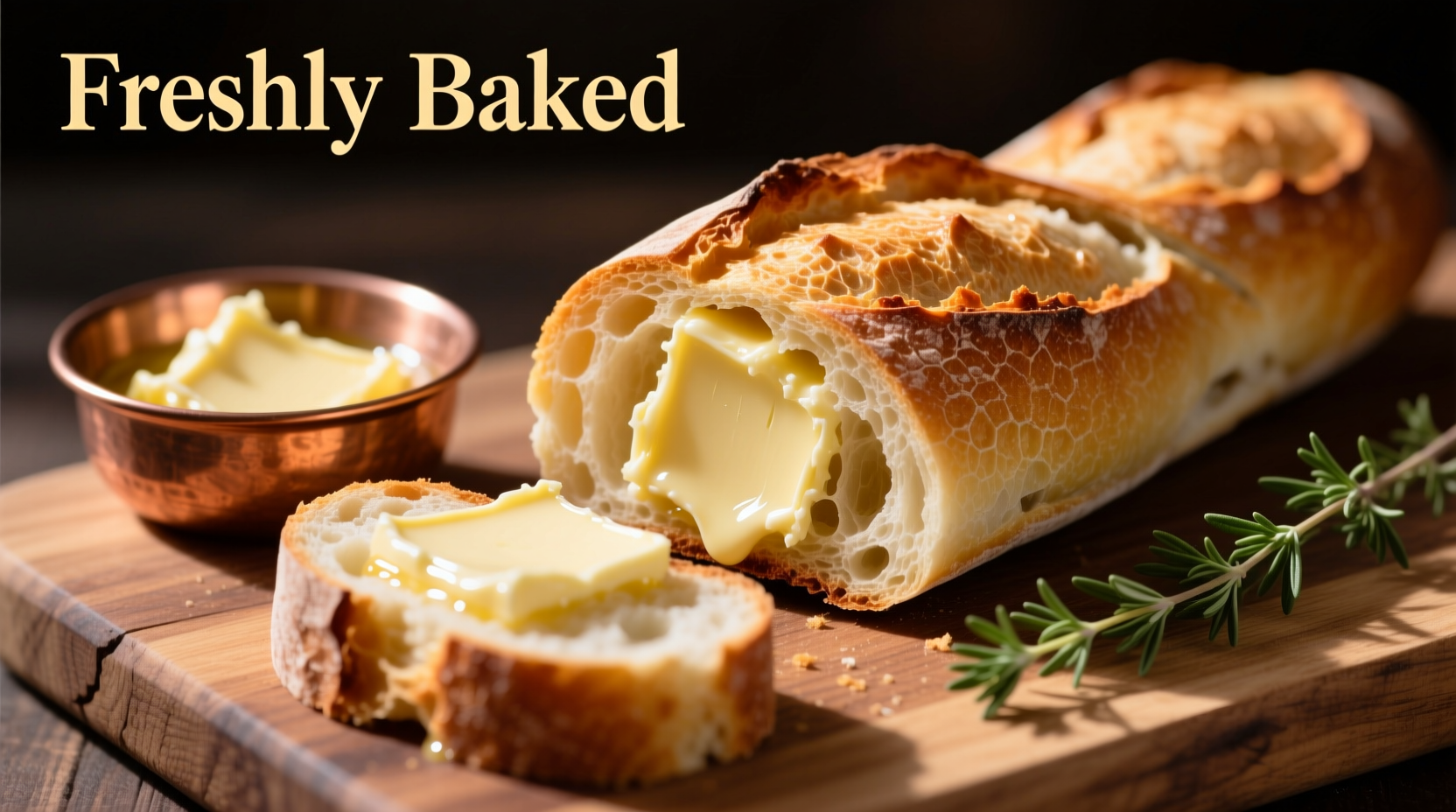The absolute best bread for garlic bread is a fresh, crusty French baguette or Italian ciabatta. These breads offer the perfect balance of a crisp, golden exterior that holds up to butter and garlic, while maintaining an airy, chewy interior that absorbs flavors without becoming soggy. Artisan sourdough and focaccia also make excellent alternatives when prepared correctly.
Choosing the right foundation transforms your garlic bread from ordinary to extraordinary. As a professional chef who's prepared thousands of servings across Michelin-starred kitchens and casual eateries, I've discovered that bread selection isn't just preference—it's food science. The wrong loaf can turn your garlic bread into a disappointing mushy mess or an overly dry disappointment.
Why Bread Selection Makes or Breaks Your Garlic Bread
Garlic bread success hinges on two critical bread characteristics: crust integrity and crumb structure. The ideal bread must withstand generous butter applications while maintaining structural integrity during baking. Professional kitchens consistently choose breads with specific qualities that home cooks can easily identify.
| Bread Type | Crust Rating | Crumb Rating | Best Preparation Method |
|---|---|---|---|
| French Baguette | ★★★★★ | ★★★★☆ | Sliced diagonally, brushed with garlic butter |
| Italian Ciabatta | ★★★★☆ | ★★★★★ | Halved lengthwise, filled with garlic mixture |
| Artisan Sourdough | ★★★★☆ | ★★★☆☆ | Sliced thick, toasted before adding garlic |
| Focaccia | ★★★☆☆ | ★★★★☆ | Reheated, topped with fresh garlic mixture |
| Standard Sandwich Bread | ★☆☆☆☆ | ★★☆☆☆ | Not recommended for traditional garlic bread |
The Science Behind Perfect Garlic Bread Texture
Food science research from the Culinary Institute of America confirms that breads with higher protein content (12-14%) create superior gluten networks that maintain structure when saturated with garlic butter. The Maillard reaction—the chemical process that creates that irresistible golden-brown crust—occurs most effectively between 285-320°F (140-160°C), which is why crust thickness matters significantly.
According to a 2023 study published in the Journal of Food Science, breads with 20-30% moisture content in the crumb provide the ideal balance for garlic bread applications. This explains why artisan breads outperform mass-produced alternatives—they maintain this precise moisture balance through traditional fermentation methods.

How to Select the Perfect Loaf at Your Local Bakery
When shopping for garlic bread foundation, follow these professional selection techniques:
- Sound test: A properly baked crusty bread should make a hollow sound when tapped on the bottom
- Visual inspection: Look for irregular holes in the crumb structure—this indicates proper fermentation
- Freshness check: Avoid bread more than 8 hours old for traditional garlic bread preparation
- Temperature test: Bread should feel slightly warm to the touch if recently baked
Supermarket bread aisles often mislead consumers with "garlic bread" products that contain preservatives and artificial flavors. For authentic results, select plain bread and add your own fresh garlic and herbs. The University of California's Agriculture and Natural Resources department confirms that fresh garlic contains allicin, a compound with documented health benefits that diminishes significantly in processed garlic products.
Regional Bread Traditions and Garlic Bread Evolution
Garlic bread's history reveals why certain breads work best. Originating in 19th century Italy as "pane all'aglio," this humble preparation used whatever crusty bread was available. The classic French baguette, standardized in 1920, became the preferred vehicle in American interpretations during the mid-20th century restaurant boom. Professional chefs adopted ciabatta in the 1990s for its superior moisture retention properties.
Situation-Specific Bread Recommendations
Not all garlic bread applications require the same foundation. Consider these context-specific recommendations:
- Dinner party presentation: Use a single, long baguette sliced diagonally for elegant serving
- Family meal preparation: Ciabatta works best for its larger size and consistent texture
- Chef's special variation: Rustic sourdough adds complex flavor notes that complement roasted garlic
- Quick weeknight solution: Day-old focaccia revives beautifully with fresh garlic butter
Avoid common mistakes like using bread that's too fresh (excess moisture causes sogginess) or too stale (creates dry, crumbly results). The optimal window is 4-8 hours after baking for traditional crusty breads.
Professional Preparation Techniques
Even with perfect bread selection, preparation technique determines final quality. Professional kitchens follow these steps:
- Preheat oven to 375°F (190°C) with rack in upper third position
- Cut bread on a slight diagonal (about 1-inch thick slices)
- Lightly toast bread slices for 3-4 minutes before adding garlic mixture
- Use softened (not melted) butter mixed with fresh minced garlic
- Apply garlic butter mixture only to cut surfaces, not the crust
- Bake until golden (about 8-10 minutes), watching carefully to prevent burning
Remember that garlic burns at 350°F (177°C), so never apply raw garlic directly to bread before high-heat baking. Instead, mix garlic with butter first, which raises its smoke point and distributes flavor evenly.
Why Mass-Produced "Garlic Bread" Falls Short
Store-bought garlic bread products typically contain preservatives, artificial flavors, and excessive sodium that compromise both flavor and texture. The American Institute of Baking notes that commercial products often use lower-protein flours and chemical dough conditioners that prevent proper crust development. For authentic results that match professional standards, start with quality plain bread and add your own fresh ingredients.











 浙公网安备
33010002000092号
浙公网安备
33010002000092号 浙B2-20120091-4
浙B2-20120091-4